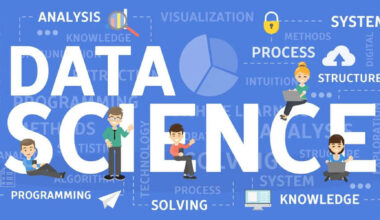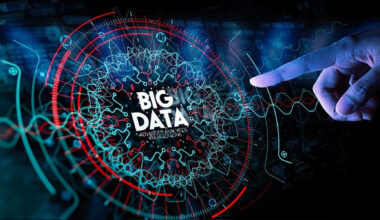Introduction
Machine Learning can be defined as the field of computer science of getting computers to learn and act like the way humans do, and also to improve their learning over time in autonomous fashion, by feeding them data and information in the form of observations and real-world interactions. Most importantly, it is the branch of artificial intelligence which is based on the idea that systems can learn from data, can identify patterns and make decisions with minimal human intervention.
Furthermore, Machine learning (ML) can be recognised as the category of the algorithm that ensures and permits software applications to become more accurate in predicting outcomes without being explicitly programmed. The basic purpose of the concept of machine learning is to build algorithms that can receive input data and can use statistical analysis to predict an output while updating outputs as new data becomes available.
Reputable definitions of machine learning –
Especially relevant, we know that with every concept, machine learning may also have a slightly different definition, depending on whom you may ask. Thus, the following are some practical definitions of machine learning from some reputable sources:
1 “Machine Learning at its most basic is the practice of using algorithms to parse data, learn from it, and then make a determination or prediction about something in the world.” – Nvidia
2 “Machine learning is the science of getting computers to act without being explicitly programmed.” – Stanford
3 “Machine learning is based on algorithms that can learn from data without relying on rules-based programming.”- McKinsey & Co.
4 “Machine learning algorithms can figure out how to perform important tasks by generalizing from examples.” – University of Washington
5 “The field of Machine Learning seeks to answer the question- How can we build computer systems that automatically improve with experience, and what are the fundamental laws that govern all learning processes?” – Carnegie Mellon University
EVOLUTION OF MACHINE LEARNING –
As we have been surrounded by new computing technologies, machine learning today is not like machine learning of the past. Talking about its start, It was born from pattern recognition and the theory that computers can learn without being programmed to perform specific tasks; researchers interested in artificial intelligence wanted to see if computers could learn from data.
Further, the iterative aspect of machine learning is essential because of the reason of models being exposed to new data, they are able to independently adapt. While many of the machine learning algorithms have been around for a long time, the ability to automatically apply complex mathematical calculations to big data – over and over, faster and faster – is a recent development in machine learning.
Following are a few widely publicized examples of machine learning applications one may or must be familiar with:
- The heavily hyped, self-driving Google car.. The essence of machine learning.
- Online recommendation offers such as those from Amazon and Netflix.. Machine learning applications for everyday life.
- Knowing what customers are saying about you on Twitter.. Machine learning combined with linguistic rule creation.
- Fraud detection.. One of the more obvious, important uses in our world today.
MACHINE LEARNING ALGORITHM – TYPES
Along with the numerous uses of machine learning, there is no shortage of machine learning algorithms. Particularly, they range from the fairly simple to the highly complex.
Following are some of the most commonly used models –
1 Decision trees – These are the models which use observations about definite actions and identify an optimal path for arriving at the desired outcome.
2 K-means clustering – This model particularly groups a specified number of data points into a specific number of groupings based on similar characteristics.
3 Neural networks– These are the deep learning models that utilize large amounts of training data to identify correlations between many variables to learn to process incoming data in the future.
4 Reinforcement learning – This is known as the area deep learning which involves models iterating over many attempts to complete a process. Furthermore, steps that produce favorable outcomes are rewarded and steps that produce undesired outcomes are penalized until the algorithm learns the optimal process.
IMPORTANCE –
The alarming interest of users all over the world in machine learning is due to the same factors that have made data-mining and Bayesian analysis more popular than ever. Also, Things like growing volumes and varieties of available data, computational processing, etc. that is cheaper and more powerful, and affordable data storage.
Now, all of the above things mean that- it’s possible to quickly and automatically produce models that can analyze bigger, more complex data and deliver faster, more accurate results (even on a very large scale). And, by building precise models, an organization has a better chance of identifying profitable opportunities or avoiding unknown risks.
CHALLENGES AND LIMITATIONS –
A correct quote by Dr. Pedro Domingo, University of Washington, states that “Machine learning can’t get something from nothing…what it does is, it gets more from less.”
First of all, one of the most common mistakes among machine learning beginners is testing and training data successfully and having the illusion of success, Domingo (and others) emphasize the importance of keeping some of the data set separately while testing models, and only using that reserved data to test a chosen model, followed by learning whole data set.
In terms of use or purpose, machine learning is not an end or any solution in and of itself. Further, attempting to use it as a blanket solution i.e. “BLANK” is not a useful exercise; instead, coming to the table with a problem or objective is often best driven by a more specific question – “BLANK”.
THE FUTURE OF MACHINE LEARNING –
While machine learning algorithms have been around for decades in our technology, they’ve received new popularity as AI has grown in prominence. Most noteworthy, Machine learning platforms are among enterprise technology’s most competitive realms, with most major vendors, including Amazon, Google, Microsoft, IBM, and others, racing to sign customers up for platform services that cover the spectrum of machine learning activities. Also, including data collection, data preparation, model building, training, and application deployment. As machine learning continues to increase in importance to business operations and AI becomes ever more practical in enterprise settings, the machine learning platform wars will only intensify.
Continued research into deep learning and AI is increasingly focused on developing more general applications. Also, today’s AI models require extensive training in order to produce an algorithm that is highly optimized to perform one task. But, some researchers are exploring ways to make models more flexible and able to apply context learned from one task to different tasks in the future.





